The GEC Traction archive is the most extensive archive collection held at the National Railway Museum. The GEC Traction archive cataloguing project is funded by the National Archives Cataloguing Grant Scheme. The archive is diverse and contains thousands of engineering drawings, bulletins, journals, project files, manuals, photographs, glass negatives, films, and microfilm. In this guest post, GEC Project Volunteer Danika Willis focuses on the glass negatives dated 1940-1979, and the English Electric and its People Staff Magazine. Both cast light onto the lives of the workers behind the machines.
The English Electric Home Guard
The Home Guard was a defense organisation of the British army formed of volunteers who were active from 1940-1945. Their role was to act as a secondary defence in conjunction with the front line troops and to guard coastal areas, airfields and factories in particular.
The English Electric formed a division of the Home guard and contributed to the defence of Great Britain during the Second World War. They did this by working alongside the Royal air force and manufacturing aircrafts such as the de Havilland Vampire, the most powerful aircraft of its time.
The glass negatives, some of which have been damaged over time, show the Home Guard outside the steel department in an unknown English Electric Works (can anyone identify these Works?!)

Ack-Ack Soldiers
The below interesting image is that of a group of Ack-Ack soldiers, who were an anti-aircraft gunfire section of the Home Guard. The glass negatives demonstrate the role workers played in keeping their community safe.
Ack-Ack soldiers consisted of men and women focused on the protection of the British Isles. Ack-Ack command was formed in 1939 and was made of several anti-aircraft divisions under the command of General Sir Frederick Pile for the duration of the Second World War.
Ack-Ack command was responsible for all aspect of the ground war against the Luftwaffe and used artillery such as heavy guns, light guns and search lights. At its height Ack-Ack command numbered over 350,000 personnel, which aside from the Royal Artillery included sections of the Home guard.
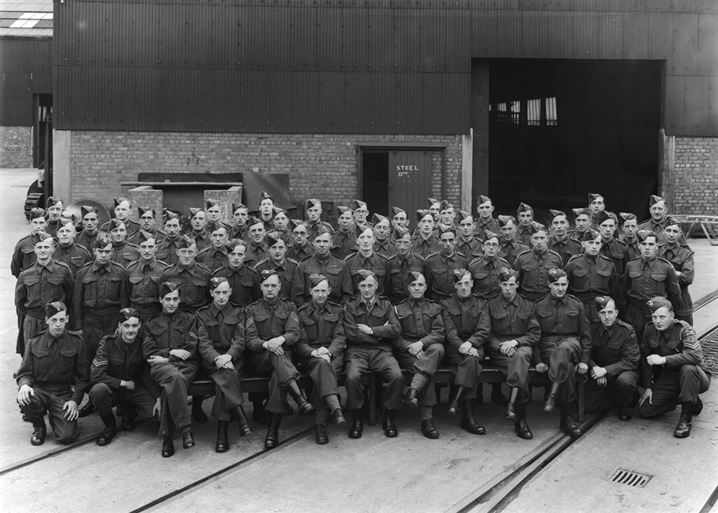
Hampsfield House
Hampsfield House was originally built in 1880 for Sir John Hibbert and was acquired by Lord George Nelson, Director of English Electric in 1946. By July 1949, 777 men and 214 women belonging to the company’s various works had received convalescent treatment at Hampsfield House. The below images show the external view of the house and the internal rooms as a convalescent home, for the welfare of the English Electric employees.

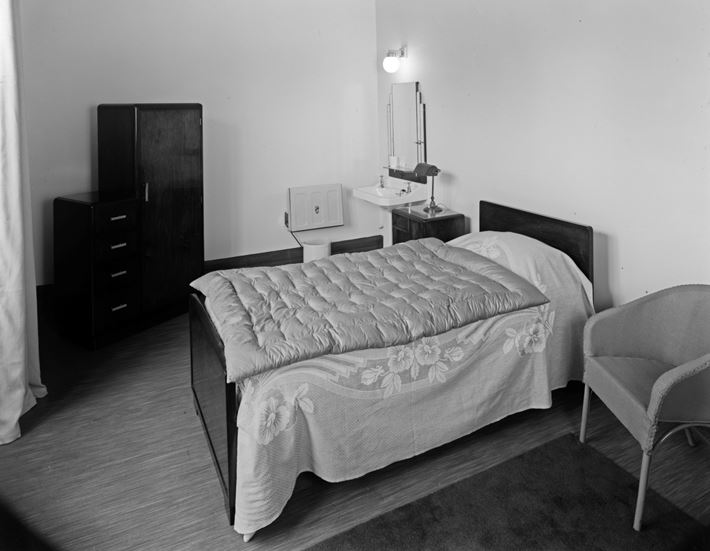
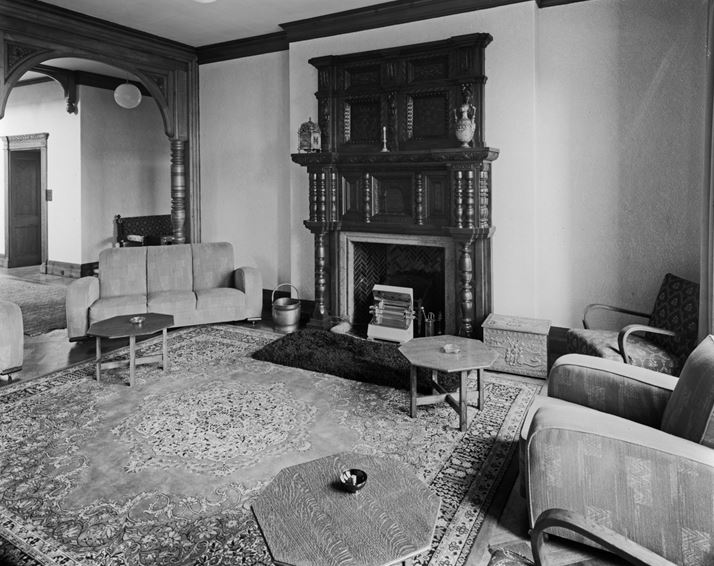
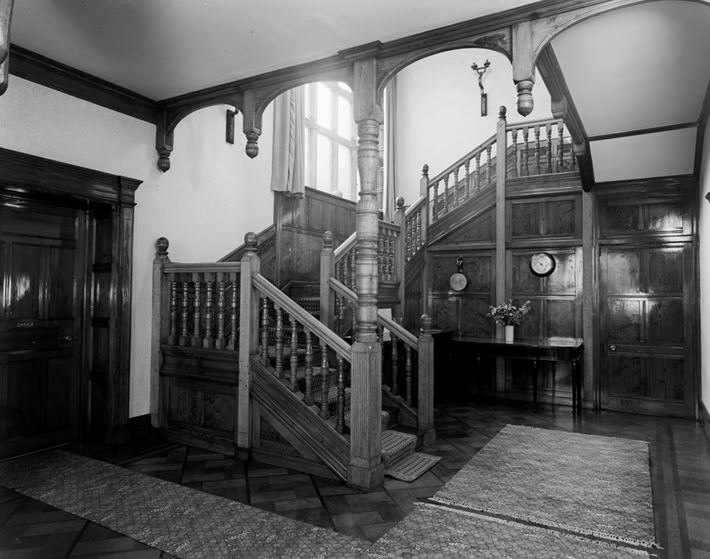
‘English Electric and its People’ Staff Magazine
The ‘English Electric and its People‘ staff magazine reported on major events happening around the various Works at Preston, Rugby, Stafford and Sheffield in departments such as the Domestic Department, Traction Department, Export Department and Lofting Department to name but a few. The magazine ran from June 1946 and aimed to foster a sense of community by encouraging employees to report their activities and life events to the editor as being ‘interesting to your fellow workers’ (see the editorial page below).
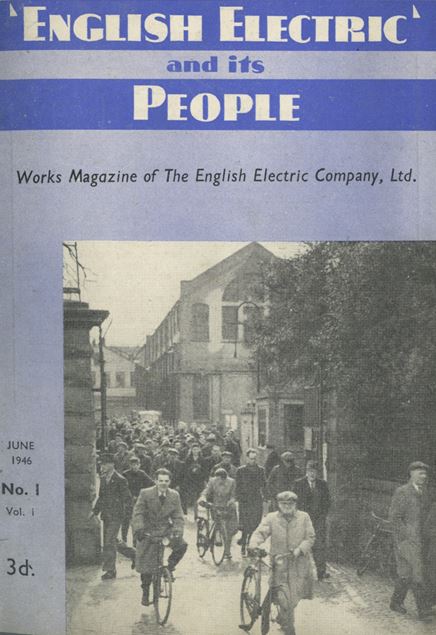
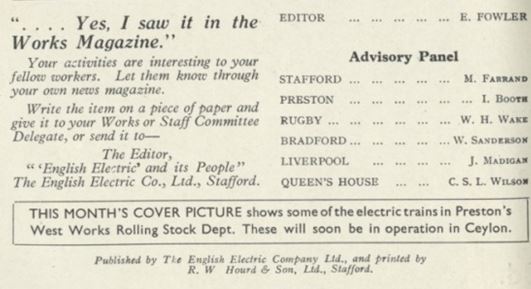
‘Around the Works’ highlighted the careers and lives of employees each month. Children were included in the family-orientated environment of their parents Works with Children’s Days and Sports Days being held, and women were likewise encouraged to participate in their Works’ social scene with “Miss English Electric” competitions, beauty and fashion shows, dances and women’s sports teams.
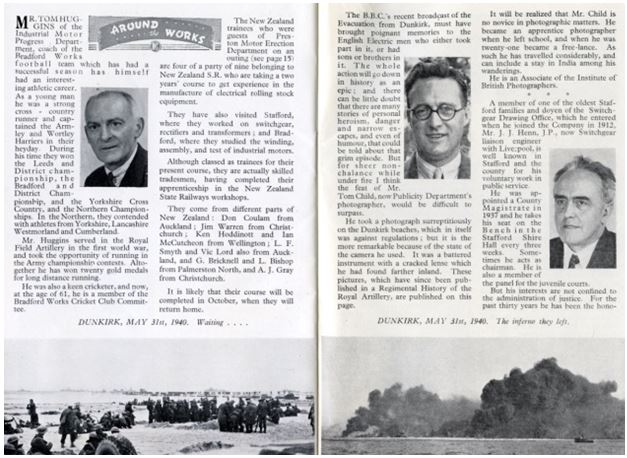
The magazine series ran monthly and features included births, marriages and deaths of current and ex-workers, reports on communal activities such as sports clubs including football, badminton, tennis, swimming, cricket and more, drama groups and department day trips, details on the health, safety and defence of the company which included the medical, dental and fire brigade sections. Post-war editions of these magazines aimed to bring English Electric workers together to support each other through the economic plight of 1945-50.
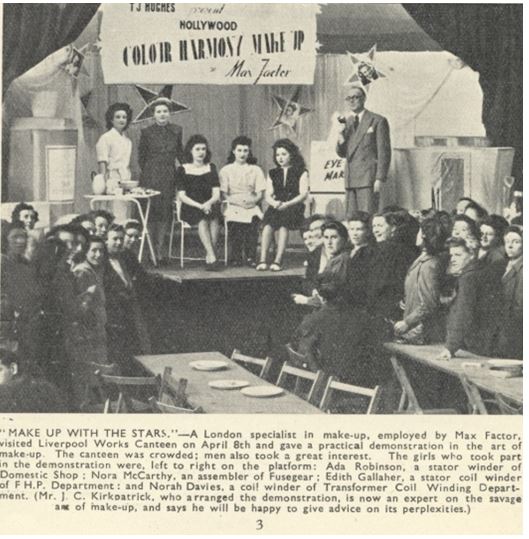
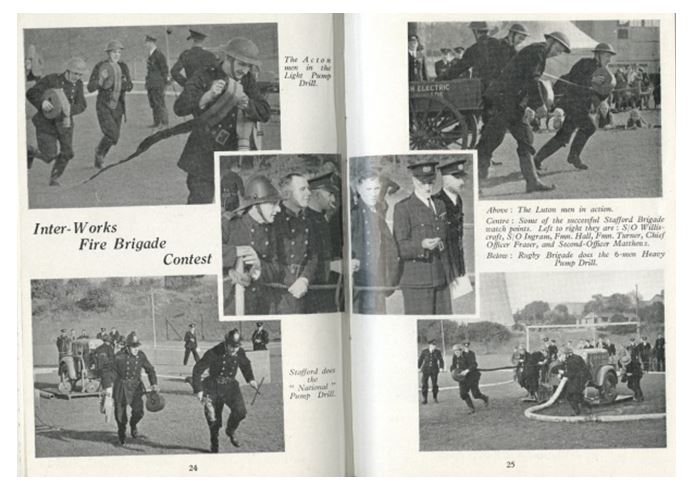
Charlotte, the project archivist, has finished cataloguing the engineering drawings; you can view a selection on this project blog post Trams, buses and TGVs – drawings from the GEC archives. The next stage of the project is to catalogue the c500 boxes of the business and technical records and the project finishes at the end of September. The collection will be available to view in Search Engine when the catalogue goes live later this year. Charlotte would be happy to answer queries about the archive if you email charlotte.dennard@nrm.org.uk.
My father Ronald Frank Wilson was a coil winder at Stafford English Electric for well over 30 years.As kids we participate in the annual summer fetes I as a baby came 2nd in a baby competition,it must have been around 1953/54.My family don’t believe me, and I was wondering on the of chance that it might or been published in the local around the work’s magazine. my name is Graham Wilson.Much older now.